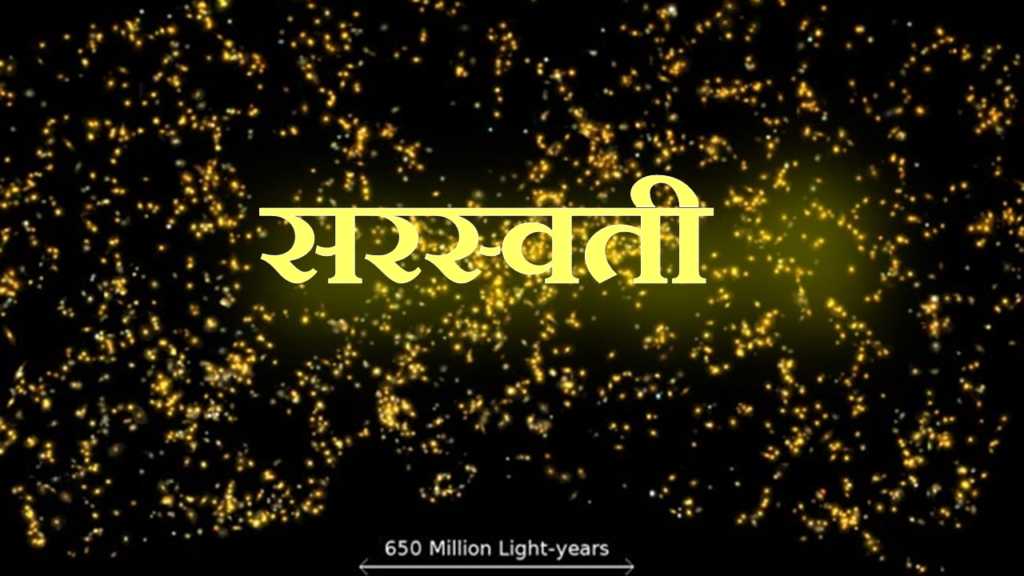Indian domination in space is in need of no introduction. Over the span of time, the contributions made by Indians in the field of space and astronomy are remarkable! Recent developments in the respective fields have changed the way India and Indians are perceived around the world.
In the latest news, Indian scientists have added another feather to their cap! A huge supercluster of galaxies situated about 4 billion light years away has been discovered by the astronomers belonging to Inter-University Centre for Astronomy and Astrophysics (IUCAA) and Indian Institutes of Science Education and Research (IISER) in Pune, besides NIT Jamshedpur and Newman College, Thodupuzha.
“Saraswati”, as it is named by the astronomers, is believed to be 4 billion light years away from Earth. Spread over the ‘great wall’ of 600 million light years, it is the farthest and largest superclusters ever discovered in the history.
It is interesting to note that Saraswati is 8-10 times farther than the first supercluster of galaxies found in 1989, Shapley. At the same time, the second supercluster, Sloan Great Wall, was found in 2003 and is relatively nearer to our planet. Our galaxy, Milky Way, is a part of the Laniakea Supercluster, which was discovered in 2014.
In words of Somak Raychaudhury, Director of IUCAA and co-author of the paper which revealed about this, “It is the first time that we have seen a supercluster that is so far away. Even the Shapley is about 8-10 times closer.”
On being asked about the reason behind naming this discovery as Saraswati, Prof Raychaudhury reveals on their tradition of naming galaxies after the rivers. “We have a habit of naming galaxies after rivers; the Milky Way is referred to as Akash Ganga. So we thought of naming this supercluster after the ancient river Saraswati.”
Prof Somak was also a part of the team that discovered Shapley galaxy named after American astronomer in 1989. What further has to be acknowledged and appreciated is that this success did not come overnight to him and his team. He, along with his lead author of the paper Dr Joydeep Bagchi, started studying this particular region approximately 15 years ago. The research was based on the data driven from the Sloan Digital Sky Survey and gave hints about two nearby clusters. The proximity of these two pointed at the suspicion of them being a part of a larger group.
Nubby universe
Based on the text from the paper, the matter distribution is not homogeneous. The matter is present in clumps and the subsequent clusters form the respective galaxy. The thin filaments join these galaxies leaving the large voids in between leading to the formation of a supercluster.
The current theory states that the galaxies see infancy in the filaments and their growth occurs at the intersection of the same. What makes Saraswati even more interesting is its ability to challenge the existing axioms. It is because it was formed so early and the formation of such a huge structure back then would have been difficult based on present day assumptions.
To help you understand this better, let me lay it out in layman terms for you. A light year is a total distance travelled by the light in one year. Now, when it is said that the galaxy is 4 billion light years away, it means that the observer looked 4 billion years back. Also, considering the age of the universe to be 13.8 billion years old, Saraswati was formed when the universe was merely ten billion years old. Going by the rules of astronomy, this raises a big question about the nature of this universe and the formation of larger structures.
However, the statement by Dr Raychaudhury clears a little air about this phenomenon. He said, “Theory has always been confounded by nature. It is true that the balance between dark matter and dark energy can produce large structures, but a supercluster of this size does present an enigma.”
To decode the message in easier words, it is the virtue of dark matter and dark energy that explains the structure of any universe. While the dark matter binds the universe together, the dark energy excites the environment and drives the space apart. It is out of the balance of these two that maintains the universe in the current form.
Summing up, there is no stopping for India to mark its dominance in major fields of humanity. We take deep pride in this discovery of our eminent scientists and wish them best for much more to come!
